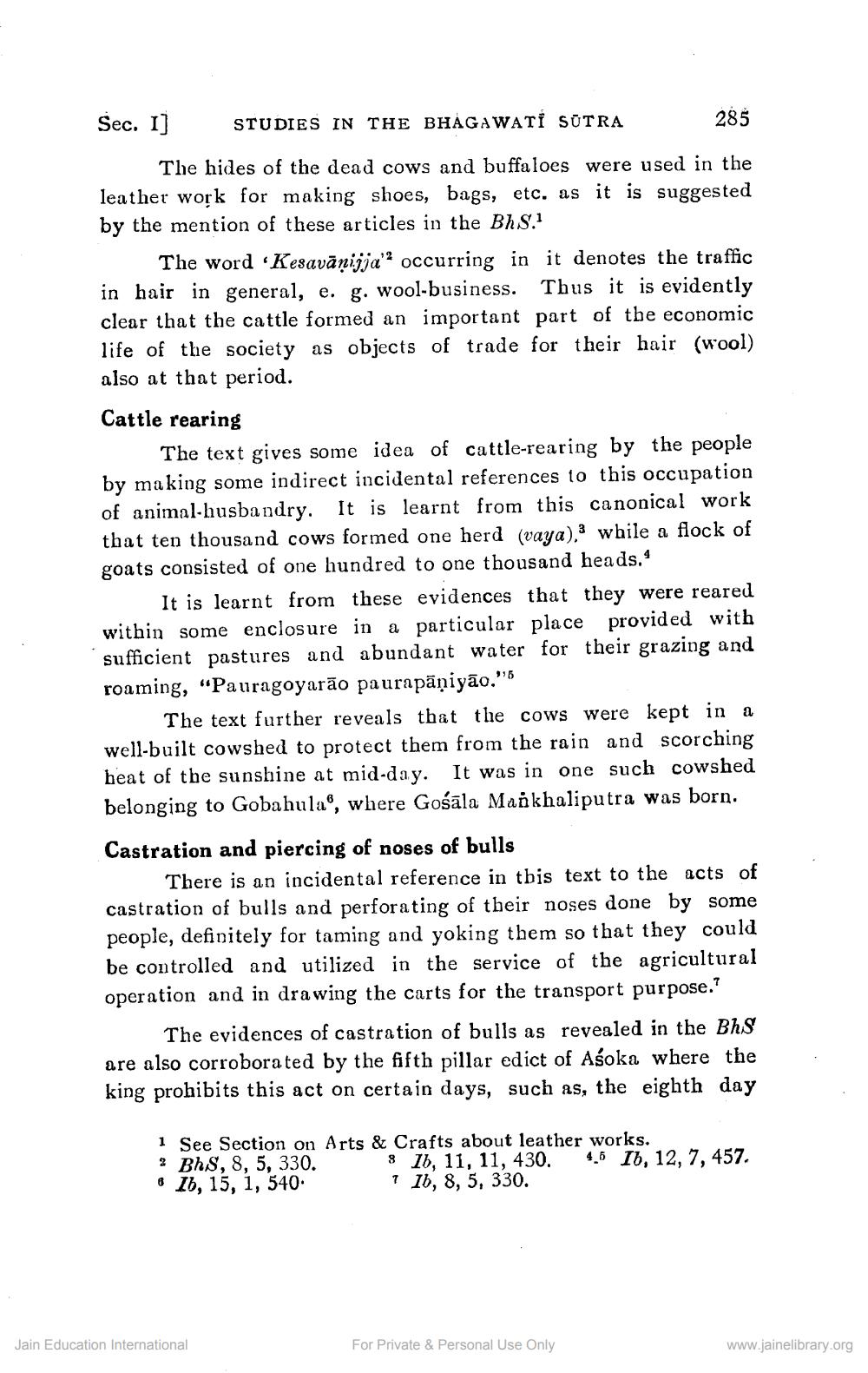________________
Sec. 1]
STUDIES IN THE BHAGAWATI SUTRA
285
The hides of the dead cows and buffaloes were used in the leather work for making shoes, bags, etc. as it is suggested by the mention of these articles in the Bhs.
The word 'Kesavāņijja occurring in it denotes the traffic in hair in general, e. g. wool-business. Thus it is evidently clear that the cattle formed an important part of the economic life of the society as objects of trade for their hair (wool) also at that period. Cattle rearing
The text gives some idea of cattle-rearing by the people by making some indirect incidental references to this occupation of animal-husbandry. It is learnt from this canonical work that ten thousand cows formed one herd (vaya), while a flock of goats consisted of one hundred to one thousand heads.
It is learnt from these evidences that they were reared within some enclosure in a particular place provided with sufficient pastures and abundant water for their grazing and roaming, “Pauragoyarão paurapāniyāo.""
The text further reveals that the cows were kept in a well-built cowshed to protect them from the rain and scorching heat of the sunshine at mid-day. It was in one such cowshed belonging to Gobahula, where Gośāla Mankhaliputra was born.
Castration and piercing of noses of bulls
There is an incidental reference in tbis text to the acts of castration of bulls and perforating of their noses done by some people, definitely for taming and yoking them so that they could be controlled and utilized in the service of the agricultural operation and in drawing the carts for the transport purpose."
The evidences of castration of bulls as revealed in the BhS are also corroborated by the fifth pillar edict of Asoka where the king prohibits this act on certain days, such as, the eighth day
1 See Section on Arts & Crafts about leather works. ? Bhs, 8, 5, 330. 8 1b, 11, 11, 430. 4.6 Ib, 12, 7, 457. . 1b, 15, 1, 540
7 16, 8, 5, 330.
Jain Education International
For Private & Personal Use Only
www.jainelibrary.org




